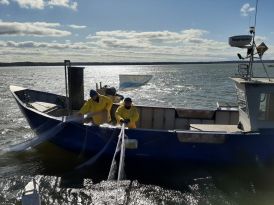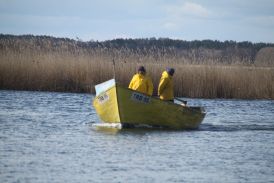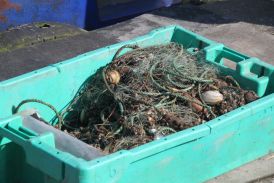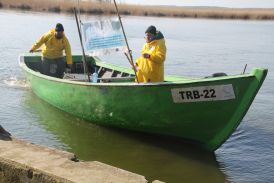Clean the Szczecin Lagoon: The project conducted by the Association of Szczecin Fish Producers Group comes to an end
Every day, our habits related to plastics threaten the planet and wildlife. The problem of environmental pollution with plastics is particularly visible in the seas and oceans, which constitute over 70% of our planet's surface. 12 million tonnes of plastic end up in the seas and oceans around the world each year. This means that every minute an amount of garbage corresponding to the capacity of one garbage truck gets into the oceans.
This has numerous consequences for the well-being of marine ecosystems. There is one type of plastic pollution that is especially dangerous to marine fauna – abandoned, lost or discarded fishing gears, or the so-called "ghost nets".
The "Clean Lagoon" project ("Protection and restoration of marine biodiversity and marine ecosystems and the compensation system for sustainable fishing activities consisting in collecting lost fishing gear and marine waste") had been implemented by the Szczecin Fish Producers Group and completed in June 2020. It was an example of an action that aims at reducing the negative impact of fishing activities on the ecosystem of the Baltic Sea.
The project was implemented in the area of the Szczecin Lagoon and Lake Dąbie. 54 fishing vessels from the ports of Trzebież, Nowe Warpno and Szczecin participated. Each participanting vessel conducted 15 eight-hour waste collection cruises. The aim of the project was remove litter from the lagoons and to increase the awareness of the society and sea users about abandoned fishing nets and their impact on the environment.
In the framework of the project, the Szczecin Fish Producers Group removed in total over 8 tonnes of litter from the area of the Szczecin Lagoon and Lake Dąbie. Exploration activities were carried out from March 1 to June 30, 2020. Most of the caught waste was fishing gears, including: nets, lead lines, stylion, lines, anchors, occasionally tires as well as plastic bottles.
The following amounts of marine litter were removed from the sea and brought to the ports:
port of Trzebież: 3,370 kg of mixed waste, 580 kg of tires
Nowe Warpno port: 1590 kg of mixed waste, 180 kg of tires
Szczecin Dąbie port: 2650 kg of mixed waste





